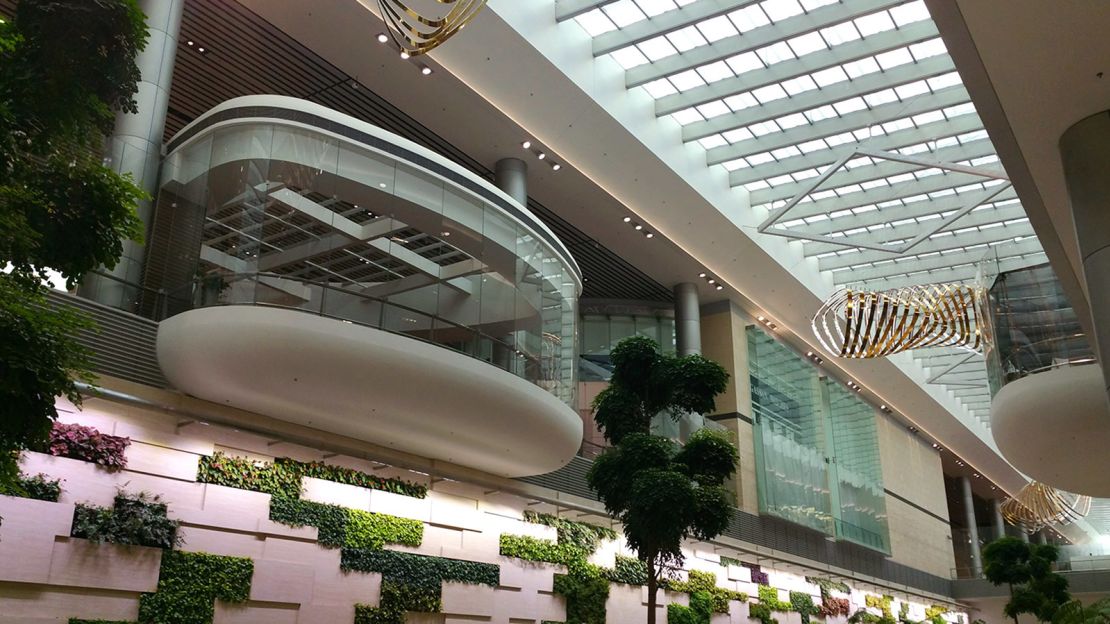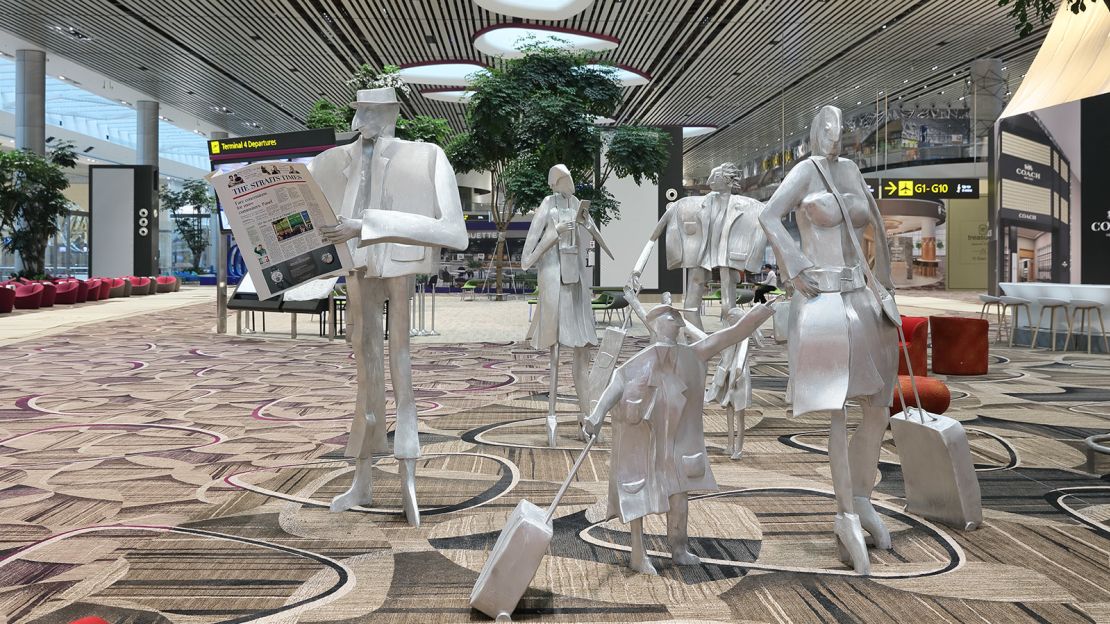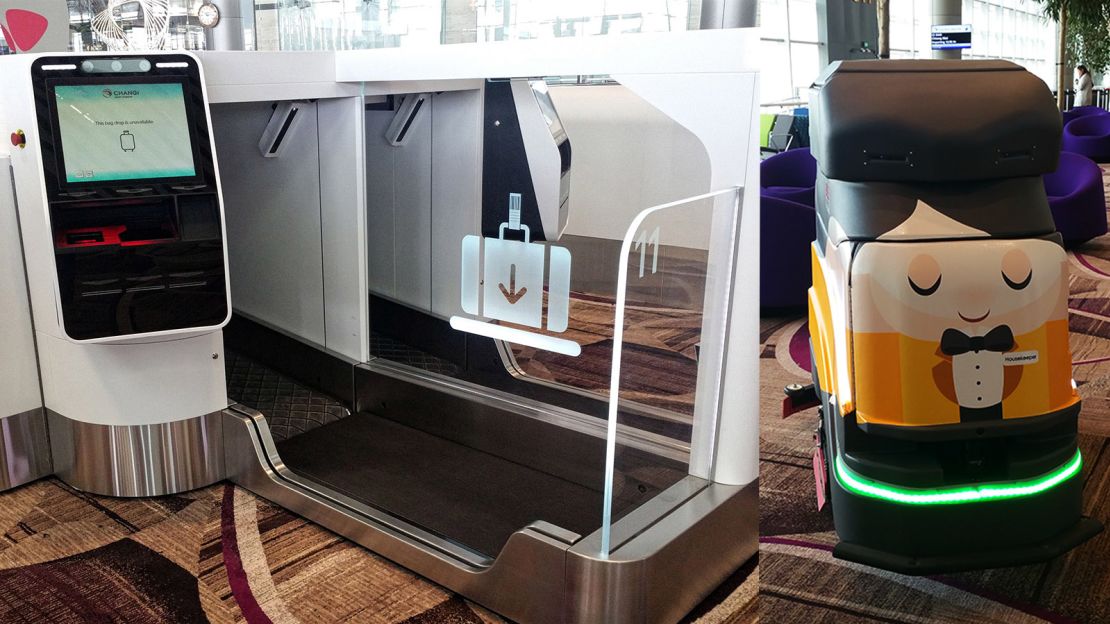Singapore Changi Airport – already regularly voted the best airport in the world – is about to get even better.
The airport’s upcoming fourth terminal (T4) is promising passengers an improved travel experience with the innovative use of technology and an interior that embraces a boutique approach.
From a 70-meter-long LED screen keeping you occupied with beautiful visuals while you’re passing through passport control and security to colorful funky chairs that wouldn’t look out of place in a tech startup office, T4 is aiming to make transiting through the terminal surprisingly fun.
Amongst some of the “surprises” that passengers, particularly young ones, can look forward to when the terminal opens later this year are cute robot “housekeepers” roaming the lounge, dog-shaped chairs and a “heritage” zone featuring the architectural evolution of Singapore’s traditional shop houses (from the 1800s to the 1950s) as well as an opportunity to sample local food delights.
Some LED facades will also come to life with “blink and you’ll miss them” animations, like a cat running, while a six-minute musical film will be played at regular intervals.
State-of-the-art technology

Beyond the funky design, the terminal is utilizing serious technologies to offer a faster end-to-end travel approach, offering passengers a choice of self-service options.
“We are pushing the boundaries to take customer service up to the next level using new and innovative ideas, and thoughtful design features,” explains Poh Li San, vice president of Changi Airport Group’s T4 Programme Management Office, adding that the smart use of facial recognition technology will ensure that the whole process is “secure and fully integrated.”
Passengers will be able to check in at a kiosk and print their luggage tags electronically thanks to a facial recognition system that bypasses the need for manual identity checks.
They’re not the first to adopt such technology.
In May, Delta launched a pilot scheme in Minneapolis-St. Paul to use facial recognition software for a self-service bag drop.
Other airports that use facial recognition tech include Auckland, Amsterdam Schiphol and Qatar Doha, though Poh says she’s not aware of any airport implementing the full suite initiatives on a terminal-wide basis.

For travelers using T4, moving through the departure gate will now be a centralized experience with an automated two-in-one approach (boarding card and passport check in one go).
The final security check should also prove faster, with passengers no longer needing to remove electronic equipment from their bags thanks to the use of CT scanners – a first in an airport, according to Poh.
The final boarding will also take place through automated gates equipped with the facial recognition system.
In the US, low-cost carrier Jet Blue also recently started a facial recognition trial for passengers boarding at Boston Logan International Airport.
This end-to-end automated approach will not only help expedite the flow of passengers through the terminal with improved efficiency, but will also help alleviate the city-state’s manpower shortage, Poh told journalists previewing the terminal.
Over the long term, Changi Airport expects 20% manpower savings with this automated approach.
READ: A preview of Singapore’s Jewel Changi
Art on the move

While the two-story terminal is only 225,000 square meters (two-thirds the size of Changi’s terminal 3), it still offers a visual sense of space thanks to the use of high ceiling skylights, a general lowering of all the furniture and the use of glass walls throughout that allow peeks of the boarding gates from the departure hall.
The focal point of the airport, visible from both floors, is a hypnotic installation of six kinetic sculptures by Germany’s ART+COM Studios, which span 200 meters at the center of the terminal.
Called Petalclouds, it’s inspired by the petals of Singapore’s national flower, the orchid. The artwork will provide a one-hour choreographed “ballet” on a loop, moving gently to a classical tune composed by award-winning composer Olafur Arnalds.
The petal theme resonates throughout the terminal, from the skylight to the marble flooring, carpet, air-con binnacles and even the dustbins and fire extinguishers, and other artworks are peppered throughout, “all curated around the theme of flight and travel,” explains Daniel Foo, who was part of the Changi team selecting the art.
Greenery has not been forgotten, with an estimated 582,000 plants, trees and shrubs throughout the terminal, including a “boulevard” of 160 ficus trees along the boarding corridor.
READ: Singapore airport’s secret staff canteens
A test for the future

Nine airlines will operate out of T4 (the four airlines from AirAsia Group, Cathay Pacific, Cebu Pacific, Korean Air, Spring Airlines and Vietnam Airlines), which has a handling capacity of 16 million passengers per year.
This will bring the total handling capacity of Changi Airport to 82 million, ensuring scope for future growth at what is already one of the busiest airports in Asia.
Last year, the airport handled a record 58.7 million passengers.
Poh said its design and innovation was very much “a test-bed” for Changi’s fifth terminal, due to be completed in the late 2020s.
“Competition remains strong in the region, and many of our neighbors are also building new airports or improving their existing infrastructure, says Poh.
“Changi Airport continues to push the boundaries to ensure that we stay ahead of the competition.”






















